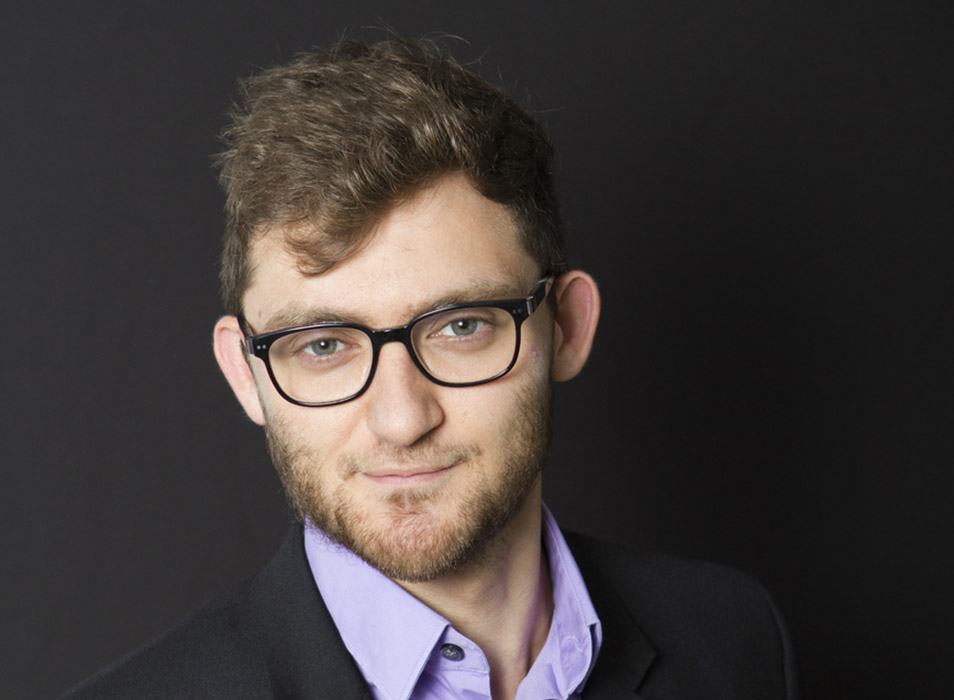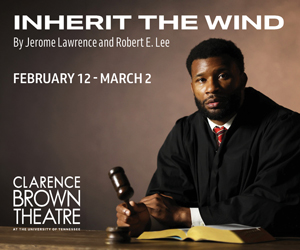Most regular concertgoers have, at least, a vague idea of the role of an orchestra’s concertmaster. He or she symbolically represents the orchestra as a whole, occupies the first chair position of the first violins, calls for tuning at the beginning of a concert, works out the bowings for the string section, and assumes the violin solos within orchestral works. In successful orchestras, however, the appointment of a new concertmaster becomes an important public event, for that person will be called upon to appear as a visible leadership figure of the entire ensemble, project inspiration and energy to both musicians and audience, as well as being a recognizable presence in a city’s music scene.
Admittedly, the Knoxville audience’s image of the KSO’s concertmaster changed in 2010 with the appointment of Gabriel Lefkowitz, who not only brought a charismatic presence to the position, but also originated the popular Concertmaster Series of chamber music events. With Lefkowitz departing Knoxville for the comparable job with the Louisville Orchestra, his successor, William Shaub, selected last spring, is now poised to put his own authentic stamp on the orchestra and its programs. And, like his predecessor, Shaub begins his tenure with the KSO in his mid-20s, an inarguably youthful age for concertmasters of major orchestras in general.
Prior to accepting the concertmaster position with the KSO, Shaub was in the Shepherd School of Music Artist Diploma program at Rice University, having previously earned Bachelor and Masters degrees from the Juilliard School. During those academic days, Shaub served as concertmaster for a number of orchestras including the Spoleto Festival USA Orchestra, the Music Academy of the West Festival Orchestra, the Juilliard Orchestra, and the Shepherd School Symphony Orchestra.
Picking up where Lefkowitz left off, Shaub assumes the programming and leadership mantle of the KSO’s Concertmaster Series this week with performances at the Knoxville Museum of Art on Wednesday and Thursday evenings. In fact, the existence of that series was one attraction that led the violinist to Knoxville.
“Not a lot of great orchestras have a series like this,” Shaub says, “where you can focus on the chamber music repertoire, spend time on it, and have resources dedicated to it.”
Shaub feels that the series represents a space for his own creativity, as well a way to get better acquainted with his colleagues—and a real bonus for the KSO audience.
“What’s great about the Concertmaster Series,” Shaub says, “is that I can be really enthusiastic about all the violin music I’ve been playing for so long. And, that’s pretty cool. Other musicians, particularly other people in concertmaster positions, may not get the opportunity to play violin music by Sarasate [Romanza Andaluza, from the Spanish Dances], may not get to play a string quartet [Beethoven String Quartet No. 4 in C minor] as often as they want. But I get to do both of those this week.”
In programming the Concertmaster Series, Shaub indicated an admiration for music director Aram Demirjian’s interest in mixing the repertoire classics with exciting music that is probably new to the audience.
“I witnessed that during my last trial week last spring,” explains Shaub. “We did Beethoven 5 and a contemporary piece with some electronic stuff [Mason Bates’ Mothership — see the review in the Knoxville Mercury]. I saw what’s going on there and thought it was really exciting and innovative. I don’t think we’re seeing that with a lot of other great orchestras in the country. But, I think we will. It’s very appealing.”
Shaub admitted that he looked to using that kind of mixed programming in his future Concertmaster Series choices.
“The second concert of the series [January, 2018] includes the familiar musical languages of Mozart and Bach, but these are followed by an incredibly intense work from living composer Kendall Briggs. His piece for dueling violins draws from Bach’s musical ideas but adds ‘surround sound’ techniques and formidable rhythms. The rhythms are so cool, in fact, they are just impossible to forget. This piece has the dramatic depth and sensational quality that we expect from the 21st century, and really contrasts with the decadence of what comes before it.”
In looking ahead to his first season with the KSO, Shaub described how Demirjian’s programming diversity was aimed at checking off a lot of the audience’s boxes.
“What I like about the upcoming season is, we have sparkling pieces like Bolero and Scheherazade. Phenomenal music, very powerful music. But, at the same time we have depth: Richard Strauss’ Death and Transfiguration; we have Paul Huang coming to play the Beethoven Violin Concerto. So, side by side with the ear candy, we have powerful messages coming through. For me, that is the genius of the programming.”
And, Shaub unabashedly proclaimed his excitement in working with Maestro Demirjian.
“One of the great things about Aram,” says Shaub, “is, when he speaks, when he talks about the piece, whether you know the piece or not, he’s telling you something new. I remember sitting in with him on the pre-concert talk in the spring, and he was talking about the Brahms Violin Concerto, a piece I know backwards and forwards. And he’s telling me things I had just never heard before. It’s so rare to find that, both intellectual talent and podium brilliance. If I were a member of the Knoxville music audience, I would want to come to the orchestra concerts, not just for the music, but to see him and watch him work.”






